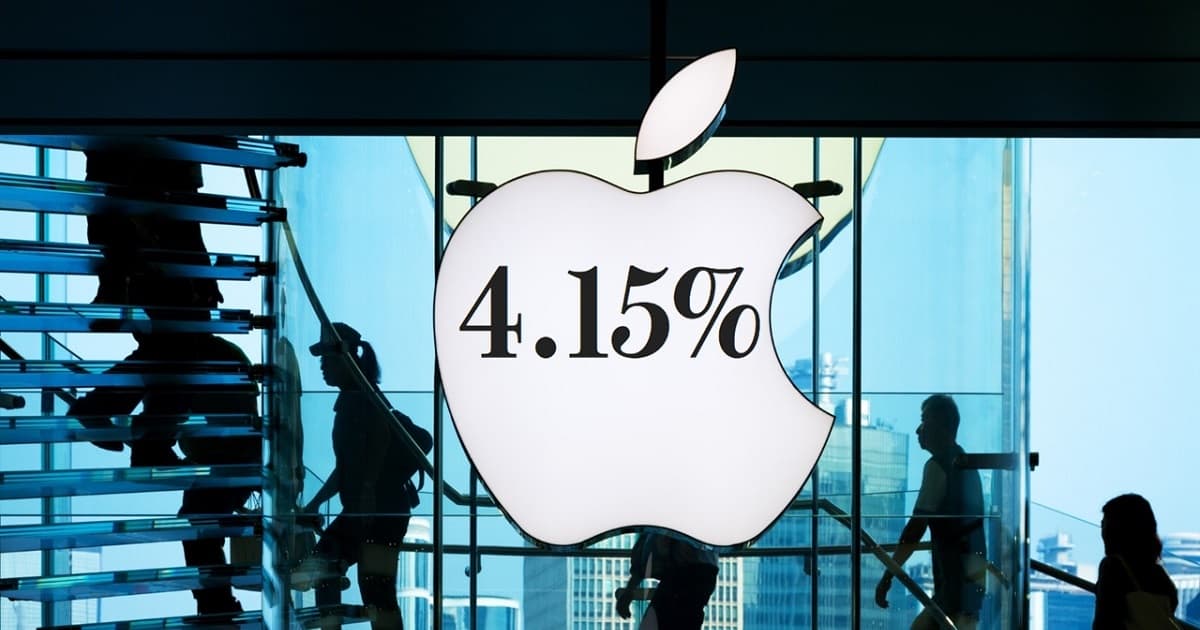So far this week we’ve seen the U.S. Federal Reserve raise interest rates another 0.25% while commenting that the U.S. banking system is sound and resilient. Seemingly oblivious to the fact that a mere two days ago the Federal Deposit Insurance Corp. (FDIC) took control of First Republic Bank (the third major bank failure in less than two months) and followed up with a fire-sale of substantially all the bank’s assets and deposits to J.P. Morgan (NYSE: JPM).
Then just after Fed Chair Jerome Powell’s press conference on Wednesday, there were more banking fireworks as PacWest Bancorp (NASDAQ: PACW) announced it is exploring strategic options, including a potential sale or capital raise which led to a 40% drop in its share price in after-hours trading. If that’s the definition of “sound and resilient” then I have some relatively good junior mining stock ideas for you.
Apple and Goldman Sachs’ solution for depositors
But fear not, options to put your money in a safe place and earn a decent return are available to you but from an unlikely source, Apple Inc. (NASDAQ: APPL). Apple and Goldman Sachs (NYSE: GS) are coming to the rescue of the American depositor. Apple is offering a new high-interest Savings account (HISA) with a 4.15% annual return to its Apple Card holders. Obviously, this isn’t available to everyone as you have to have an Apple Card account which probably means you participate in the Apple ecosystem in some way, shape, or form (which I don’t). You also need to be able to have a bank account in the U.S., which means citizenship or property ownership or adherence to some other rules that may or may not apply to non-Americans. But if you meet these requirements you can bank with Apple (via Goldman), at least up to a maximum of US$250,000, which is the updated FDIC insurance limit.
Apple’s HISA – benevolent or another consumer hook
My personal opinion is that Apple isn’t benevolently doing its part to help restore confidence for depositors.
The top-notch marketing team at Apple has stepped outside the box again and identified another clever way to put more hooks into its zealous disciples. I’m sure they’ve done plenty of research to determine that if there’s a bunch of money in a person’s Apple account, they’ll make a few more purchases in the Apple Store, or perhaps upgrade their iPhone or iPad a little more frequently.
And perhaps that’s why Apple’s HISA has a higher yield than Goldman’s own high-yield savings account which offers a 3.90% return. Whatever the case, their strategy appears to be working as Apple’s new savings account attracted nearly US$1 billion in deposits in just its first four days.
Rising interest rates not reflected in bank saving accounts
Circling back, the Fed’s seemingly myopic approach to dealing with inflation by rapidly and relentlessly raising interest rates appears to have spawned a banking crisis.
Compounding that, at least for many regional banks, the average bank is paying less than 0.5% on savings accounts according to the FDIC’s published National Rates and Rate Caps for Savings deposit products. But Apple is certainly not the first entity out there to offer a HISA to attract deposits away.
No wonder banks are seeing a run on deposits as people try to generate a return on their hard-earned savings. I could see people being less likely to panic and take all their money out of an account if it was just going somewhere else to earn nothing.
But by creating an impetus (the collapse of Signature Bank of New York and Silicon Valley Bank) that caused people to review their banking situation, the ball started rolling. At this point, people realize that without taking on any additional risk they can earn an incremental 3.5% to 4.0% on their money. It’s hard to imagine there wouldn’t be a run on deposits.
Is PacWest just the next ‘domino’ to fall
So where does this leave us, besides in a bit of a mess? That’s a very good question. The recent PacWest seeking “strategic options” news could be a signal that we aren’t out of the woods yet.
Although I’m sure the large banks (JPMorgan Chase & Co. (NYSE: JPM), Bank of America Corporation (NYSE: BAC), Wells Fargo (NYSE: WFC), etc.) that can play the long game might be sitting back and salivating at the chance to pick up another quality financial institution at a huge discount – JPMorgan shares jumped over 3% on the news of the First Republic deal.
With that said, I’m not worried about a complete collapse of the financial system as I’m sure at some point the Federal Reserve will wake up and realize that it’s not solely about inflation.
The regional banking crisis could tighten the credit market and negatively impact the economy
However, some unintended consequences of this strain on the financial system could lead to an overall tightening in the credit market as smaller, regional banks step back from making loans to medium to small businesses that the big banks won’t give the time of day to.
According to the U.S. Small Business Administration, businesses of fewer than 500 employees in the US make up 99.7% of employer firms and over 49% of private-sector employment.
If this credit tightening impairs the grassroots growth of the economy, we finally get the recession that everyone has been forecasting for almost a year. Even worse, if inflation remains sticky we could end up with stagflation.
Perhaps Tim Cook and the rest of the brilliant minds at Apple can figure out something else that helps remedy the situation that the Fed has placed firmly in our laps.
Editor: Dean Bristow
Dean Bristow has been involved in the North American Crude Oil business for 30 years including Energy Trading, Infrastructure Development, Transportation, and Refining. During that tenure, he spent…
This article was published by: Dean Bristow
Visit the original article here



